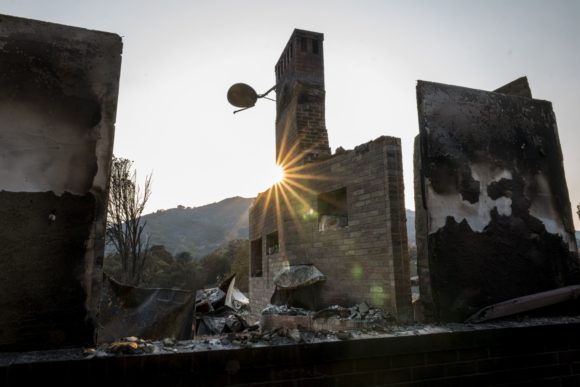Last September, California entered its bi-annual bond sale flush with a ratings upgrade from Fitch Ratings and a $21 billion budget surplus.
A year later, California kicks off its fall debt sales under dramatically different circumstances. Wildfires scorching thousands of acres are creating another stress on the state’s resources and its response to the coronavirus pandemic. S&P Global Ratings is warning that it may lower the Golden State if its finances become unbalanced for a long period. To close a $54 billion shortfall, California resorted to deferring payments and plumbing reserves, while holding out hope for federal aid that has yet to materialize.
For Franklin Templeton’s Jennifer Johnston, the blazes, which came much earlier in the fire season than usual, could exacerbate the state’s existing problems with housing affordability and the economic wreckage from pandemic-related shutdowns. They can eventually undermine local tax bases, especially if the disease persists without a vaccine, she said.
“Will wildfires be the last straw? And over time, will we see population decline? It’s bringing general climate-related risk more to the forefront,” said Johnston, a vice president and research analyst. “You have to factor it into your analysis, if you’re going to own a credit where this happens every year, versus communities that don’t have this as an issue.”
Relative Yields
Such long-term concerns won’t impede the state’s access to capital. But relative yields on its $2.4 billion general-obligation sale, which prices Wednesday, show investors demanding more in compensation. Ten-year bonds were being offered Tuesday to retail buyers at 1.13% yield, or 30 basis points over benchmark debt, compared with 0.94% yield, or 13 basis points over benchmark debt for California securities, according to data compiled by Bloomberg.
So far, wildfires have burned 1.48 million acres, with three of the 20 largest blazes in California history occurring in August, according to the state’s fire service. The agency has already consumed about 80% of the amount budgeted for the year ending in June 2021 to deal with them, finance department figures show.
The blazes, many of them sparked by lightning from extreme weather, forced evacuations, with about 27,000 still unable to return to their homes as of Tuesday and facing the difficulty of relocating safely as the pathogen continues to spread. The far-drifting smoke is pushing air quality to dangerous levels, undermining the ability of restaurants in cities to offer outdoor dining to keep afloat during the pandemic.
Meanwhile, the state’s about a month away from cuts that will be triggered absent federal aid, including $6.6 billion to its schools and community colleges, under the budget lawmakers passed for the current fiscal year.
So far, the three major credit rating companies have held their stable outlooks on the state, meaning a downgrade isn’t imminent. And California has sufficient cash on hand so it doesn’t need to borrow through revenue anticipation notes, unlike during past crises. But S&P has flashed a warning in a release ahead of the bond sale.
Stressed Liquidity
“Should reserves drop to the point where liquidity is stressed, or the state experiences undue political difficulty in making necessary budget adjustments when addressing its projected sizable budget gaps in fiscal 2022 and beyond, we could potentially lower the rating or revise the outlook,” the company said.
For this year’s budget, the state deferred $12.9 billion in payments to schools and community colleges and borrowed $9.3 billion from other funds — obligations officials must honor, even if the economic recovery lags. They anticipate general fund revenue growing by 2% for the year beginning in July and then by more than double for the year after that, bond documents show.
“If we don’t see a rapid recovery in the economy, I think the budget may create greater challenges for them in 2022 and 2023 than we expect,” said James Dearborn, director of municipal credit research at DWS.
Was this article valuable?
Here are more articles you may enjoy.


 Allianz Built An AI Agent to Train Claims Professionals in Virtual Reality
Allianz Built An AI Agent to Train Claims Professionals in Virtual Reality  Tesla, EEOC Plan Talks to Settle Factory Racism Suit
Tesla, EEOC Plan Talks to Settle Factory Racism Suit  What The Return of California’s ‘Death Discount’ Means for Litigation
What The Return of California’s ‘Death Discount’ Means for Litigation  Palantir Poaching Suit Called ‘Scare’ Tactic by Ex-Employees
Palantir Poaching Suit Called ‘Scare’ Tactic by Ex-Employees 